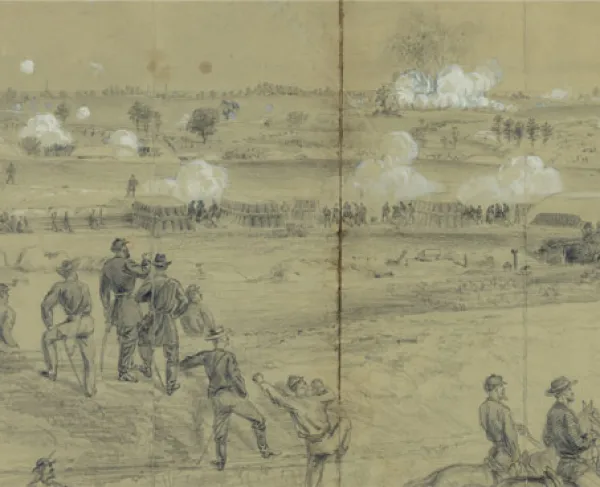The Battle of Hatcher's Run

The three-day engagement known as the Battle of Hatcher's Run took place February 5-7, 1865. Union General U.S. Grant's two main objectives in his 1865 winter offensive were, first, to block Robert E. Lee's supply route on the Boydton Plank Road and, second, to take control of the last remaining railroad furnishing Petersburg, the South Side. The Federal forces involved were General David N. Gregg's cavalry division and Andrew Humphreys' II Corps.
Confederates opposing them were General Henry Heth's division and John Gordon's Second Corps (Clement Evans' and John Pegram's divisions), which had recently returned from the Shenandoah Valley.
When Lee received word of the movement, he sent Heth's and Evans' divisions out of their positions to attack the Federals. General Humphreys entrenched his ground for the next couple of days. On the 6th, Gordon - supported by General W.H.F. "Rooney" Lee's cavalry - moved out to stop Warren's V Corps from moving toward the Boydton Plank Road.

Fighting in wooded terrain, the forces pushed each other back and forth between Dabney's sawmill and the Vaughan Road. At some point during the fighting, John Pegram was killed. Gordon was now reinforced by William Mahone's division, commanded by General Joseph Finegan. Grant also sent help to this expedition in the form of reinforcements from the VI and IX Corps. That night snow, hail, and sleet fell on the troops as the men began constructing slight rail breastworks.
The 7th was spent by Warren reconnoitering Gordon's position, but no major fighting took place on this day. Confederate General Moxley Sorrel was wounded in the skirmishing. The Southerners had stopped Grant's seventh offensive.
Although the Federals did not achieve their goal, they were now able to extend their entrenchment lines to the Vaughan Road Crossing of Hatcher's Run. This would put them three miles closer to the South Side Railroad.
Grant sent 34,000 men on this expedition and was stopped by about 14,000 Southerners. The Confederates lost about 1,000 men, while the Federals lost 171 killed, 1,181 wounded, and 187 missing. This battle was called by one Confederate soldier, "preliminary skirmishing on the 5th, a sanguinary on the 6th, followed up by the enemy feebly on the 7th."


